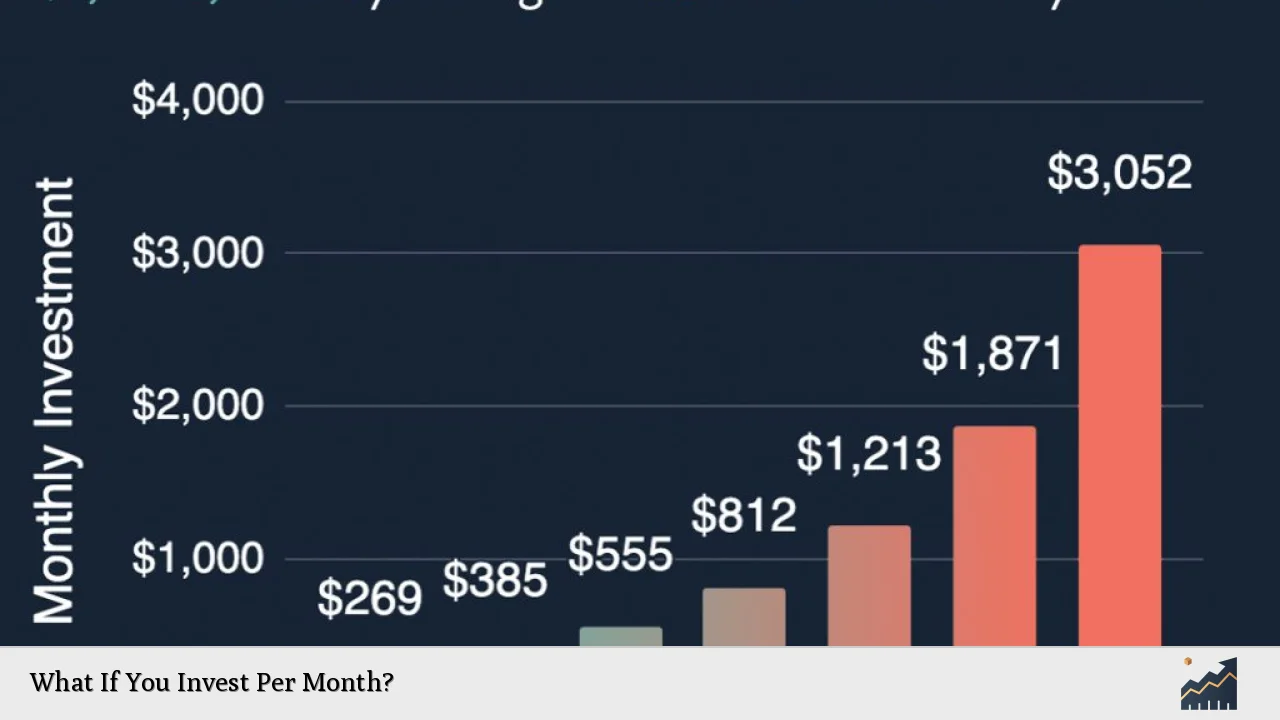Investing a fixed amount of money each month can be a powerful strategy for building wealth over time. This method, often referred to as dollar-cost averaging, allows investors to purchase more shares when prices are low and fewer shares when prices are high, effectively reducing the average cost per share over time. By committing to regular investments, individuals can benefit from the power of compounding returns while mitigating the risks associated with market volatility.
Investing monthly is particularly appealing for those who may not have a large sum of money to invest all at once. It also encourages a disciplined approach to saving and investing, making it easier to build a substantial portfolio over time. Whether you are saving for retirement, a major purchase, or simply looking to grow your wealth, understanding how monthly investments can work in your favor is crucial.
| Benefit | Description |
|---|---|
| Consistency | Regular investments help build a habit and foster discipline. |
| Reduced Risk | Dollar-cost averaging lowers the impact of market volatility on your investments. |
Understanding Monthly Investments
Investing monthly involves setting aside a specific amount of money to invest in stocks, bonds, mutual funds, or other investment vehicles at regular intervals. This approach not only helps in accumulating wealth but also instills financial discipline.
Key aspects of monthly investing include:
- Budgeting: Allocating a portion of your income for investments ensures that you are prioritizing your financial future.
- Compounding Growth: The earlier you start investing, the more time your money has to grow through compounding interest. This means that the returns on your investments begin to earn their own returns.
- Flexibility: Monthly contributions can be adjusted based on changes in income or expenses, making it easier to adapt to financial circumstances.
Investing consistently each month can significantly impact your financial goals over the long term. For example, if you invest just $100 every month for 30 years with an average annual return of 7%, you could accumulate nearly $98,000 by the end of that period.
Benefits of Investing Monthly
Investing monthly offers numerous advantages that can enhance your financial well-being. Here are some of the most significant benefits:
- Disciplined Savings: Regularly setting aside money for investments promotes a savings habit that can lead to greater financial stability.
- Market Timing Mitigation: By investing consistently, you avoid trying to time the market, which can be risky and often leads to missed opportunities.
- Affordability: Monthly contributions allow individuals to invest without needing large sums upfront, making investing accessible for everyone.
- Long-Term Growth Potential: Regular investments take advantage of market fluctuations and contribute to long-term growth through compounding returns.
- Diversification Opportunities: Monthly investing allows you to gradually build a diversified portfolio over time rather than concentrating risk in a single investment.
In summary, monthly investing is an effective strategy that can help individuals reach their financial goals while minimizing risks associated with market volatility and timing.
How to Start Investing Monthly
Starting a monthly investment plan is straightforward and involves several key steps:
1. Set Clear Goals: Determine what you are saving for—whether it’s retirement, education, or another major purchase—this will guide your investment strategy.
2. Choose an Investment Account: Select an account type that aligns with your goals. Options include individual brokerage accounts, retirement accounts like IRAs or 401(k)s, and tax-advantaged accounts.
3. Determine Your Budget: Assess your finances to decide how much you can comfortably invest each month without compromising your essential expenses.
4. Select Investment Vehicles: Choose where to put your money—stocks, bonds, mutual funds, or ETFs are common options. Consider diversifying across different asset classes for better risk management.
5. Automate Your Investments: Setting up automatic transfers from your checking account to your investment account can simplify the process and ensure consistency.
6. Monitor and Adjust: Regularly review your investment performance and make adjustments as necessary based on changes in your financial situation or market conditions.
By following these steps, anyone can establish a robust monthly investment plan that aligns with their financial goals.
Strategies for Successful Monthly Investing
To maximize the benefits of monthly investing, consider implementing these strategies:
- Diversify Your Portfolio: Spread investments across various asset classes and sectors to reduce risk and enhance potential returns.
- Focus on Low-Cost Funds: Opt for low-cost index funds or ETFs that track market performance without high management fees.
- Reinvest Dividends: Automatically reinvesting dividends can accelerate growth by purchasing additional shares without additional capital outlay.
- Stay Informed: Keep up with market trends and economic indicators that may affect your investments; however, avoid making impulsive decisions based on short-term fluctuations.
- Be Patient: Understand that investing is a long-term endeavor; avoid reacting emotionally to market volatility and stay focused on your goals.
By adopting these strategies, investors can enhance their chances of achieving significant returns over time while minimizing risks associated with market fluctuations.
FAQs About Monthly Investing
- What is dollar-cost averaging?
Dollar-cost averaging is the practice of investing a fixed amount regularly regardless of market conditions. - How much should I invest each month?
Your monthly investment should be based on your financial situation and goals; starting small is better than not investing at all. - Can I change my monthly investment amount?
Yes, you can adjust your contributions based on changes in income or expenses. - What should I invest in monthly?
Consider diversified options like index funds or ETFs that align with your risk tolerance. - Is it too late to start investing?
No, it’s never too late; starting now can still lead to significant growth over time.
In conclusion, investing a fixed amount each month is an effective strategy for building wealth over time. By understanding the benefits and implementing sound strategies, individuals can achieve their financial goals while managing risks associated with market volatility. Whether you’re just starting out or looking to enhance an existing investment plan, committing to regular contributions will set you on the path toward financial success.

